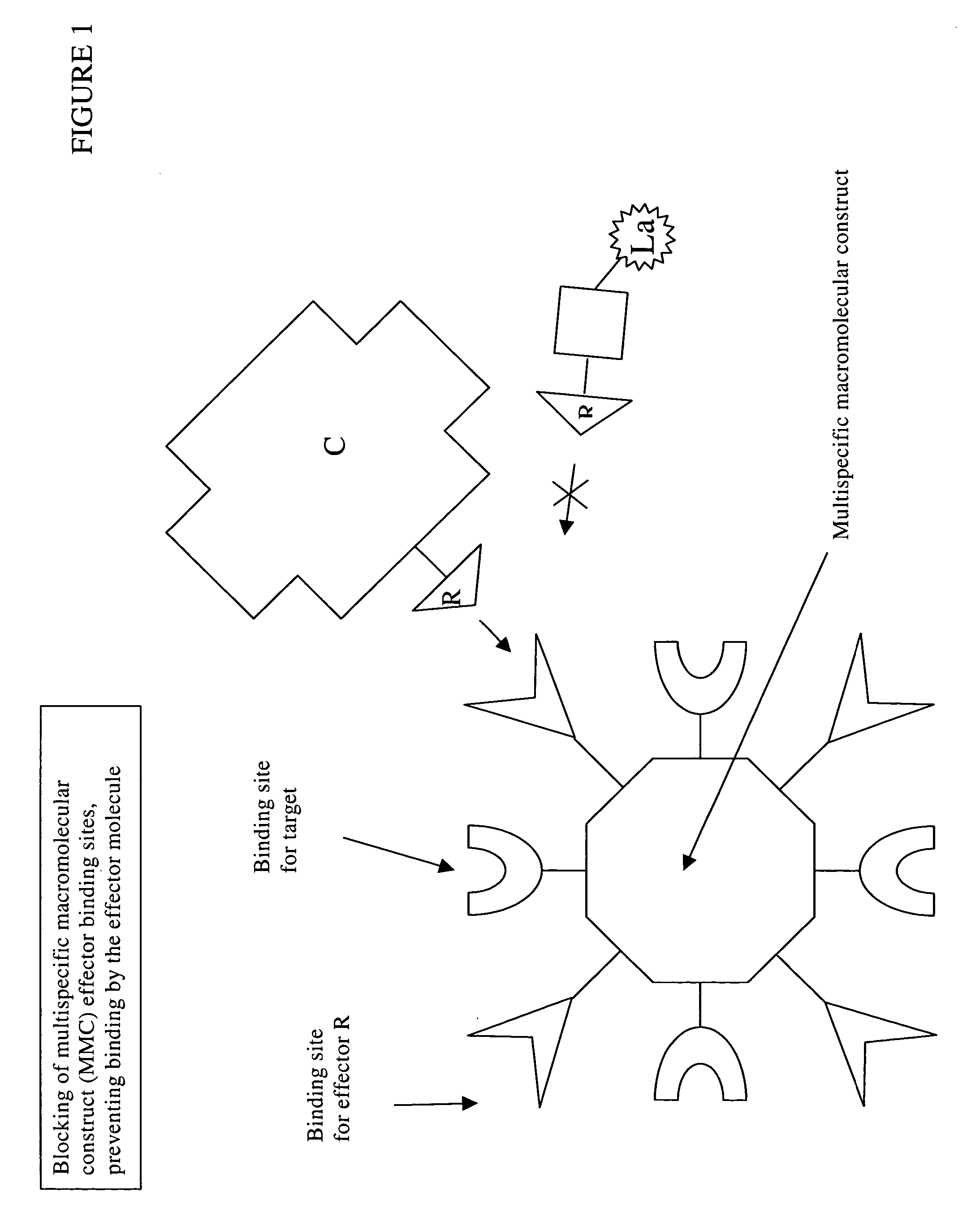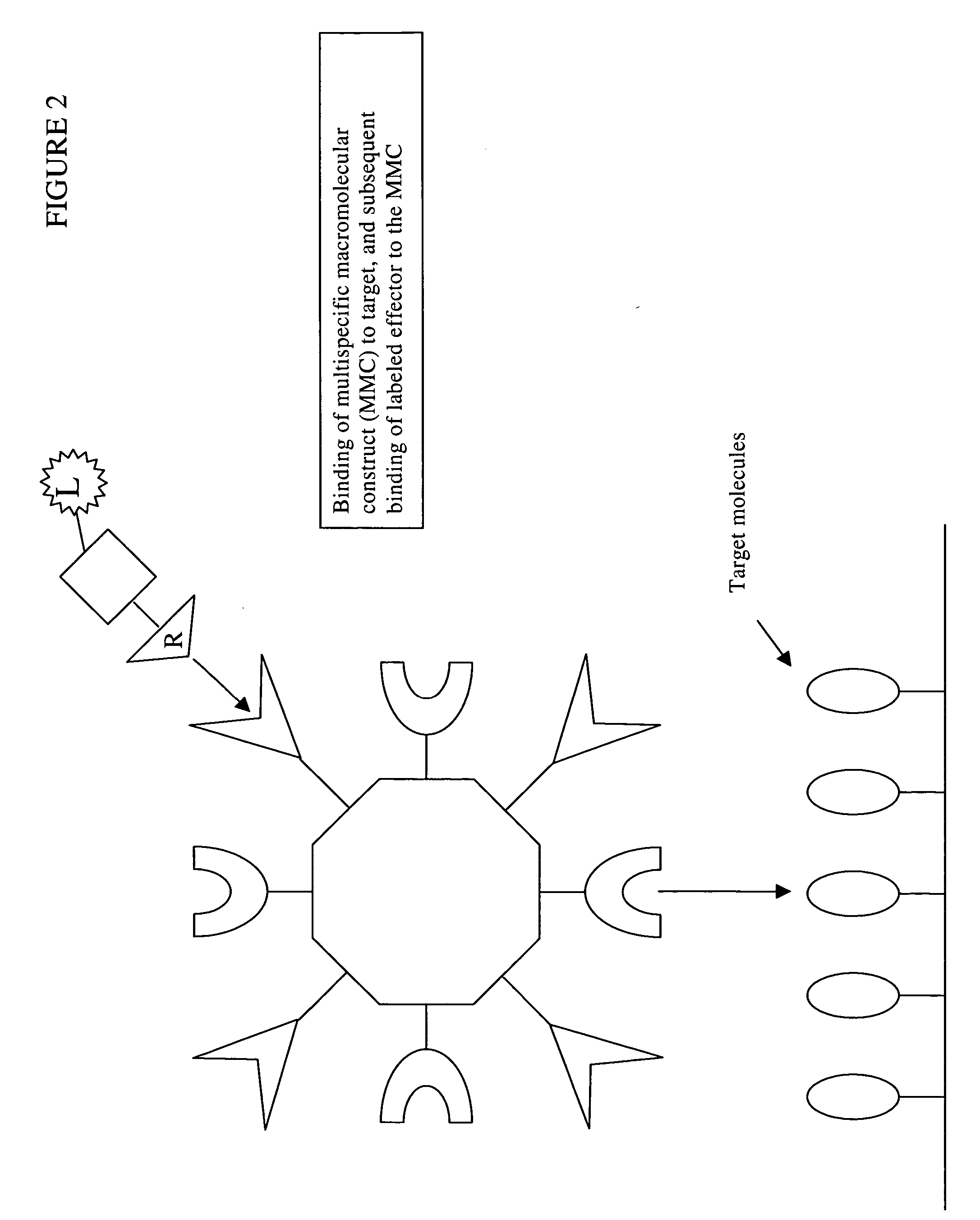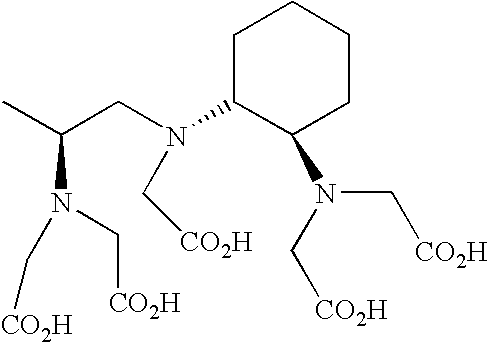Compositions and methods useful in pretargeted imaging
a technology of compositions and methods, applied in immunoglobulins, peptides, therapy, etc., can solve the problems of short half-life of some radionuclides such as f-18, limited or precluded use, and long-lived radionuclides are not as advantageous, so as to improve the target-to-background ratio of pretargeted imaging techniques
- Summary
- Abstract
- Description
- Claims
- Application Information
AI Technical Summary
Benefits of technology
Problems solved by technology
Method used
Image
Examples
example 1
Clinical Imaging of Colon Cancer
[0091] A bispecific antibody is used as the multivalent macromolecular construct in the instant example. A bispecific antibody is injected into a colon cancer patient and allowed to accumulate over a period of several hours to a few days at colon cancer lesions expressing CEA (carcinoembryonic antigen).
[0092] A blocking agent is injected, which associates itself rapidly to the bispecific antibody in circulation by binding, making the bispecific antibody substantially unavailable for subsequent binding. By virtue of its large size (the carrier molecule is a 100 kDa DNA strand), the blocking agent penetrates lesions slowly enough that it will not block a significant portion of bispecific antibodies at the lesion site.
[0093] After some time (minutes to a few hours), 10 mCi of an F-18 labeled peptide-based effector is injected, which quickly penetrates the lesions and binds to the bifunctional antibody, while being prevented from binding to the bifunct...
example 2
Preclinical Imaging in Animal Models
[0095] A tumor-bearing mouse is injected with a bispecific antibody that accumulates over a period of several hours to a few days at colon cancer xenograft expressing CEA (carcinoembryonic antigen).
[0096] A blocking agent is subsequently injected, which associates itself rapidly to the bispecific antibody in circulation, making it unavailable for later binding. By virtue of its large size (the carrier molecule is a 100 kDa DNA strand), the blocking agent penetrates the xenograft slowly enough that it will not block a significant portion of bispecific antibodies bound at the xenograft site.
[0097] After some time (minutes to a few hours), 200 μCi of a Cu-64 labeled peptide-based effector is injected, which quickly penetrates the xenograft and binds to the bifunctional antibody, while being prevented from binding to the bifunctional antibody in circulation by the blocking agent.
[0098] PET imaging is performed at 1 to 4 hours post-effector injecti...
PUM
| Property | Measurement | Unit |
|---|---|---|
| binding affinity | aaaaa | aaaaa |
| time | aaaaa | aaaaa |
| single photon emission computed tomography | aaaaa | aaaaa |
Abstract
Description
Claims
Application Information
 Login to View More
Login to View More - R&D
- Intellectual Property
- Life Sciences
- Materials
- Tech Scout
- Unparalleled Data Quality
- Higher Quality Content
- 60% Fewer Hallucinations
Browse by: Latest US Patents, China's latest patents, Technical Efficacy Thesaurus, Application Domain, Technology Topic, Popular Technical Reports.
© 2025 PatSnap. All rights reserved.Legal|Privacy policy|Modern Slavery Act Transparency Statement|Sitemap|About US| Contact US: help@patsnap.com



